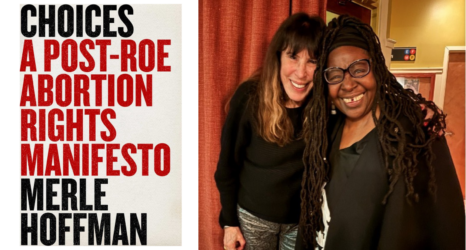On March 8, women all around the world will get up and do something they don’t usually do: nothing.
International Women’s Day has been chosen to be “A Day Without Women” by the organizers of the Women’s March on Washington. Some might think that this is just an extension of the action we saw on January 21, when hundreds of thousands of women from across the country filled Washington’s streets to protest any rollback of women’s rights. But there is something different between the march and the strike, both in practice and in symbolism.
In practice, the strike is not about physically putting ourselves in the public space to reclaim it, as the march was. On the contrary, it’s about excluding ourselves from schools, workplaces, stores, government, and elsewhere to make a poignant statement: you can’t live without us, and you, therefore, need to respect us and respect our rights.
Believe me, our absence will be felt. Women make up around 40 percent of the global workforce and work longer hours than men —an average of 30 minutes a day longer in developed countries and 50 minutes in developing countries. In the United States, the economy is 11 percent bigger thanks to women’s work, and women’s contribution to the national GDP is equivalent to more than $1.7 trillion in greater output.
Symbolically, the difference is our understanding of our own power and how we use it. While marching together is a show of force through numbers, a strike is a show of force through something subtler. It’s the forced exercise of imagining the world without women.
Both tactics are part of a bigger agenda: the re-politicizing of women’s rights and gender equality under the ever-arching framework of equal rights for all. While the past decade has done a lot to mainstream feminism into public narratives and discussions, we had yet to see feminism become a new unapologetic political agenda. Now it is.
This kind of protest in America might feel to many like something new, but it’s merely the continuation of the work of thousands of advocates around the world to elevate women’s rights and gender equality into a global agenda supported by all, for all. This kind of capacity to rapidly organize and mobilize is not something that has been improvised. The strengthening of the global women’s rights movement has been a process long in the making.
For several years now, women have been at the forefront of the response to crumbling democratic systems, the rise of political and religious extremism and the urgency of imagining a way to lead this planet into sustainable models of living. For centuries, women have put their bodies and souls out there to fight populism, authoritarianism, and patriarchy. In far-away towns and cities, women have led strikes and marched on their local and national halls of power. They have stripped off their clothes, painted their faces and used words, music, and art to vocalize oppression, violence, and discrimination. They have used their homes, markets, streets and now the virtual online world to express, criticize, deconstruct, amplify, vocalize and demand their rights. They have held office and drafted laws to try and secure rights for themselves and their communities.
In 1789, French women gathered in a Parisian square and decided to go on strike. They ended up marching on Versailles, and the rest is history. On August 9, 1956, 20,000 women marched on the Union Buildings in Pretoria, South Africa. On October 24, 1975, 90 percent of women in Iceland went on strike to demand equal rights. More recently, women in Argentina took to the streets of Buenos Aires to protest gender-based violence and impunity. #NiUnaMenos was a slogan heard throughout Latin America.
Women have always shown up to defend our rights, one way or another. But now, things are changing.
We’ve finally leveraged technology in a way we hadn’t before. With the click of a button, we can unite all the well-worn strategies, approaches, and agendas to give birth to a truly global umbrella movement for women’s rights and gender equality, under which a variety of movements co-exist and strengthen each other. The understanding that our diversity is our power, and that technology can amplify it, has brought us to a new age of recruiting for the feminist movement and cultivating existing members.
We’ve turned intersectionality into a what Jenny Ennarson has called a practical application of a radical political position. The global women’s movement has taken on intersectionality as its core value – and is building a new collective agenda based on gender issues and the way they intersect with other identities and experiences of marginalization. Finally, there’s been a shift from the pursuit of what I call “self-rights” to the collective pursuit of equality for all – not just based on gender – but on race, economic inequalities, and social status. Feminism has always been about dismantling patriarchy and oppressive social systems of power, but now we are doing it in a new, better, and more inclusive way.
This is the coming of age of a revitalized global women’s rights movement. So together, on International Women’s Day, we will be on strike.





